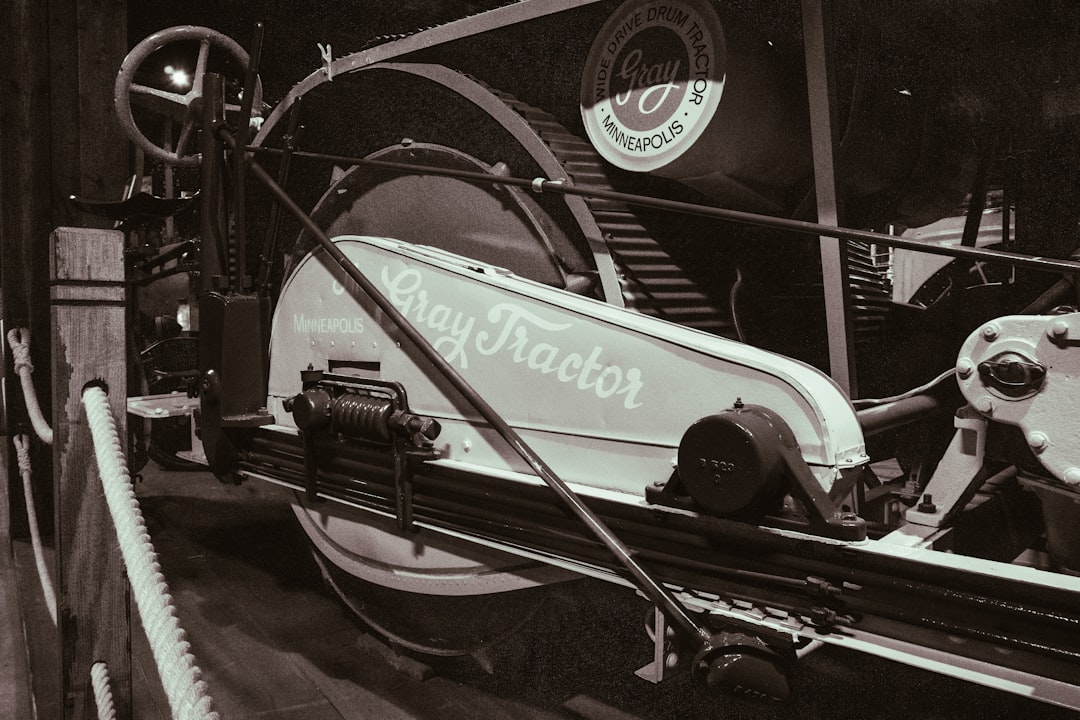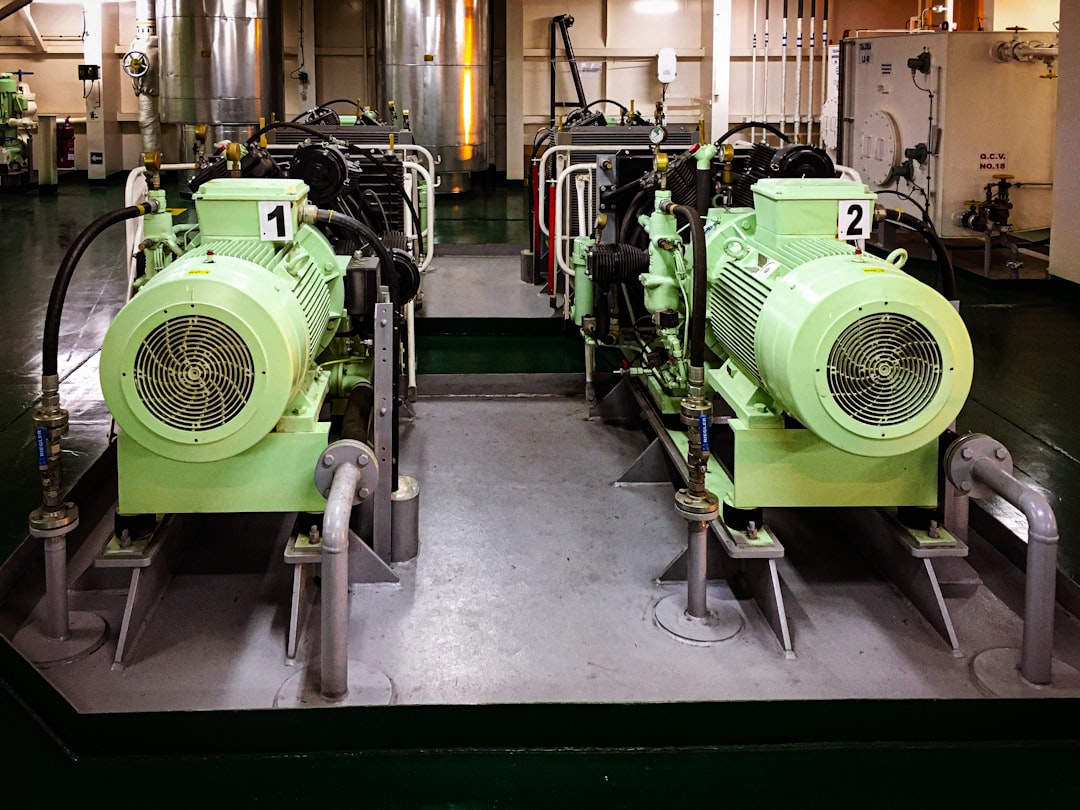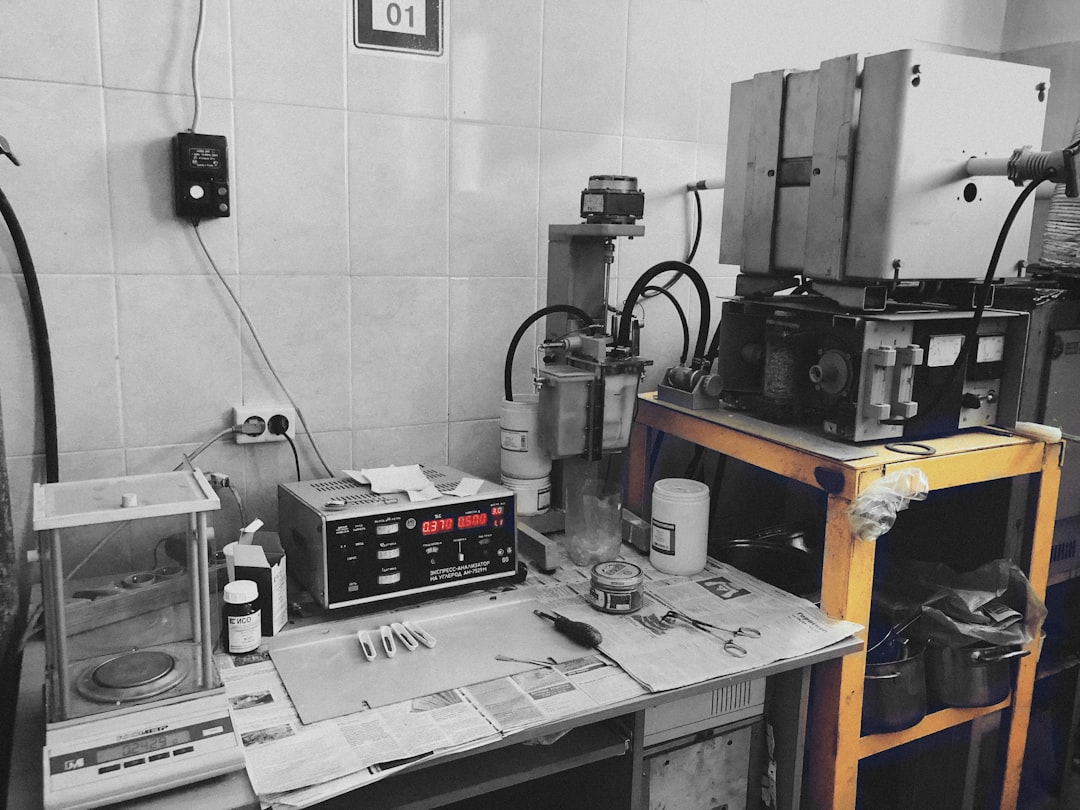

Engage prospects with a scan and streamline customer engagement with FREE QR code marketing tools by Sona – no strings attached!
Create a Free QR CodeFree consultation

No commitment

Engage prospects with a scan and streamline customer engagement with FREE QR code marketing tools by Sona – no strings attached!
Create a Free QR CodeFree consultation

No commitment

For machinery cleaning service providers, operational blind spots are all too common: maintenance logs go missing, compliance events are untraceable, and critical signals from high-fit customer accounts are never surfaced or acted on. Without a digital connection, providers risk lost opportunities, slower response times, and incomplete account records. Paper forms, static tags, and stand-alone spreadsheets cannot keep up with the pressure to deliver proof of service, track performance, and demonstrate compliance on demand.
QR codes bridge these gaps by seamlessly connecting the physical world of equipment cleaning to digital intelligence. With a scan, technicians, clients, and auditors can access live service histories, submit incident reports, verify certifications, or trigger follow-up workflows. Service leaders turn scans into data that flows into CRM, field service, and analytics platforms, making every interaction measurable and actionable. Sona QR is built to support every step of this transformation by generating dynamic codes, tracking engagement, and syncing data to the systems your teams already use.
To modernize workflows:
Example: A provider converts paper inspection routines into QR-driven digital entry points. Each scan opens a mobile-optimized checklist tied to the asset ID and the technician's badge. Completion triggers a timestamped service log, pushes updates to the client portal, and posts a compliance certificate that auditors can access with the same code. The provider now captures every interaction, enriches CRM records, reduces administrative work, and enters audits with confidence.
By connecting scans to outcomes, teams steadily improve cycle time, reduce rework, and discover otherwise invisible growth opportunities. The result is faster, error-resistant workflows in which every scan is a potential source of revenue insight or compliance validation, supported by measurable, sustainable business practices.

Machinery cleaning services increasingly struggle with hidden operational risks: anonymous site visits from prospective clients, lack of visibility into which accounts are browsing mission-critical cleaning solutions, and friction-filled communication around compliance. These issues often result in lost leads, missed upsell windows, and fuzzy accountability. As sustainability regulations tighten and clients demand clearer proof of work, analog processes break down under pressure.
QR codes help turn these challenges into advantages by acting as fast, app-free entry points to the exact task or document that matters. Technicians can log services, clients can verify certificates, and auditors can inspect evidence with a single scan. Dynamic destination control keeps content current even after labels are printed, while scan analytics reveal who engaged, where, and when. With Sona QR, teams see which codes drive the most valuable actions, update links centrally, and map scan activity to buyer journeys and renewals.
QR codes help in five critical ways:
Some cleaning providers are already enriching their prospect pipeline by using QR-triggered forms and contextual content. When an EHS manager scans a compliance poster to access a certificate or when a plant engineer scans a service tag to check a maintenance schedule, those touches become identifiable, segmentable signals that would have stayed anonymous in a purely offline workflow. For operational examples in this space, see QR and NFC in cleaning.

QR codes are versatile enough to support most operational and commercial workflows in machinery cleaning. Choosing the right format ensures that each scan leads to the correct action with the least friction. For field-heavy environments, mobile-friendly web destinations and forms tend to deliver the best results. For client support and escalation, vCards and pre-filled messages simplify handoffs. For secure sites, QR-based Wi-Fi access helps contractors get online without delays.
Here are the most useful formats for this vertical:
With Sona QR, you can generate any of these formats, keep them organized by site and asset, and update destinations centrally. As you map formats to specific tasks, design your destinations with field conditions in mind: short load times, large touch targets, and concise instructions that work well on small screens.
Often, the biggest hurdle to scaling is not lack of demand, but an inability to capture and segment audience behavior. Missed scans, overlooked interest from high-fit industries, or generic account records all contribute to wasted marketing effort and slow sales follow-up. Growth-focused cleaning services use QR codes to pinpoint where digital access directly addresses these gaps, transforming everyday surfaces into revenue-sensitive signals.
Think of growth in two layers. First, use QR codes to ensure every operational event is captured and visible. This creates trustworthy data for compliance and customer reporting. Second, layer analytics and attribution so that scans generate audiences, triggers, and priorities for sales and account teams. When a plant manager repeatedly scans a service tag to review maintenance plans, that pattern is both a proof-of-service win and an upsell signal for extended coverage or specialized cleaning packages, grounded in intent data.
High-impact placements include:
By focusing on these transition points, cleaning services close the loop between anonymous activity and real growth. You are not only reducing friction for clients and auditors, you are also transforming routine interactions into measurable demand capture.

QR-enabled workflows should target the recurring moments that drive client trust and operational performance. Start with use cases that are both high frequency and high value, then expand to edge cases once you see adoption and ROI.
As QR triggers become integral to daily operations, analytics tie each scan back to account-level journeys. You begin to see which facilities repeatedly check SOP updates, which roles engage with service logs, and which assets generate frequent incident reports. Those patterns help prioritize visits, anticipate expansion, and show value at renewal.
Each QR scan is a behavioral signal. It captures what someone wanted in that moment: a cleaning guide, an incident form, a certification, or a quote. By deploying unique codes across touchpoints, you can segment audiences automatically and use that data to fuel precise retargeting, renewal strategies, and upsell campaigns.
Start by defining the journeys you want to observe. Awareness scans often occur on trade show materials, fleet vehicles, or facility posters. Consideration scans happen at equipment, inside SOPs, or on contracts. Conversion scans live on pricing sheets, service proposals, or maintenance plan pages. With Sona QR, you can tag these codes by stage, location, and asset to build lists that sync directly to your CRM and ad platforms for intent-driven retargeting.
Here is how to turn scans into audiences:
In machinery cleaning, powerful distinctions include clients actively checking compliance content versus those exploring extended service plans, new prospects scanning at events versus current clients scanning assets on site, and urgent incident submissions versus routine maintenance checks. Treat these signals differently and you will elevate both customer experience and revenue performance.

Disconnected campaigns are a persistent pain point for industrial cleaning providers. Print materials generate interest that does not show up in digital analytics, and field interactions never make it into CRM systems. QR codes serve as the bridge that binds multi-channel programs and creates a unified prospect and client journey that your team can see and act on.
Think of QR codes as connectors across channels. They turn brochures into portals, posters into proof points, vehicles into lead capture, and invoices into feedback loops. With Sona QR, every code feeds a central view of engagement so marketers and operations can coordinate perfectly timed follow-ups and personalized content.
QR codes serve as the offline onramp to your digital engine. With a centralized platform like Sona QR, you can manage codes at scale, monitor performance by channel, and sync scan data to CRM and attribution tools. This gives you one connected view from the first scan to the conversation that closes the deal.
Use this checklist to plan, launch, and optimize a QR initiative that improves service quality, accelerates compliance, and generates measurable demand. The goal is simple: match each code to a clear outcome, ensure it is easy to scan in the real world, and track the results so that you can iterate quickly.
Each step includes practical considerations you can apply immediately. Follow the sequence the first time, then adapt it to your team’s cadence as you scale to more assets, sites, and campaigns.
Even incremental improvements, such as surfacing a previously anonymous prospect or logging a missed compliance event, can yield significant gains in operational efficiency and sales outcomes. Treat each deployment as an experiment and refine placements, messages, and destinations based on real-world performance.
A persistent frustration for cleaning service providers is the lack of clear attribution. Which activities actually drive engagement, renewal, or expansion? Where are costly opportunities lost? QR data, when coupled with robust analytics, transforms ambiguity into intelligence. You can see which QR placements attract attention, which content keeps users engaged, and which accounts are progressing toward a decision.
Start by defining your core metrics. Scan volume and unique scanners indicate reach. Completion rates for incident forms and service confirmations indicate usability. Time on destination and return scans suggest deeper intent. Tie these signals to account records and you begin to understand which interactions predict renewal or expansion.
Advanced platforms like Sona QR make it possible to connect anonymous scans to known buyers through identity resolution and to stitch QR activity together with website visits, ad clicks, email engagement, and CRM updates, supported by Sona’s offline attribution guide and insights on account identification. The result is a unified journey from first scan to signed contract, with clarity about which placements and messages drive measurable growth.
Scaling QR deployments requires discipline and creativity. You need consistency in how codes are generated, placed, and tracked, plus inventive placements that align with real-world behaviors. Start with the tips below to increase scan rates, improve data quality, and turn engagement into action.
By continually refining where and how you deploy QR codes, you will unlock new levels of customer satisfaction, compliance insight, and revenue resilience. Treat your QR footprint as a living system that deserves the same attention and optimization as your website or ad campaigns.
QR codes represent far more than a digital convenience. For machinery cleaning service providers, they are foundational to tracking every valuable engagement, closing lost-revenue gaps created by offline blind spots, and turning compliance risks into transparent, auditable workflows. By designing each scan as a purposeful moment in a living buyer and client journey, teams finally overcome the long-standing frustrations of incomplete records, missed prospect signals, and delayed follow-up.
The path forward is practical and proven. Start with one or two high-impact use cases such as service record access and incident reporting. Use dynamic codes to ensure content stays current. Track results and connect scan activity to your CRM and revenue metrics. As adoption grows, expand placements across your fleet, facilities, and marketing channels so that every touchpoint becomes measurable and valuable.
With Sona QR, you have everything needed to generate, manage, and analyze QR codes at scale. Create your first codes, place them on the assets that matter, and watch as offline interactions become actionable digital signals. Start creating QR codes for free.
QR codes have revolutionized the machinery cleaning services industry by transforming routine maintenance and client interactions into seamless, data-driven experiences. They enable service providers to offer instant access to cleaning protocols, equipment history, and safety guidelines, enhancing operational efficiency and customer trust. Imagine empowering your clients and technicians with a simple scan that delivers real-time information and updates, reducing downtime and boosting satisfaction.
With Sona QR, you can create dynamic, trackable QR codes tailored for machinery cleaning services—update cleaning schedules, track service history, and gather actionable insights without the need for reprinting. Every scan becomes a touchpoint that drives customer loyalty and operational excellence. Start for free with Sona QR today and unlock the full potential of QR technology to elevate your machinery cleaning services and grow your business.
Best practices include identifying friction points, digitizing service interactions with QR-triggered forms, prioritizing high-traffic touchpoints for QR code placement, and using analytics to turn scan data into actionable insights.
Maintain machinery by using QR-enabled inspection checklists and service logs that ensure real-time tracking of maintenance activities, enabling faster responses and reducing rework.
They offer improved operational efficiency, transparent proof of service, compliance validation, reduced administrative work, real-time incident reporting, and measurable engagement data for growth opportunities.
Choose a provider that uses dynamic QR codes, integrates scan data with CRM and analytics platforms, supports multiple QR code formats for your needs, and can demonstrate measurable improvements in service quality and compliance.
Innovative methods include deploying dynamic QR codes on equipment for live service logs, using QR-triggered digital forms for incident reporting, enabling real-time compliance certificate access, and integrating QR scan data with sales and marketing tools for targeted follow-up.
QR codes bridge offline and online workflows by providing fast, app-free access to service histories, certifications, and incident reports while enabling real-time tracking, dynamic content updates, and measurable customer engagement.
Useful formats include web links to SOPs and logs, digital forms for reporting and feedback, vCards for contact sharing, Wi-Fi access codes for contractors, app download links, and pre-filled SMS or email triggers.
QR codes capture engagement signals from clients and prospects, enabling segmentation by intent and behavior, which helps prioritize sales follow-up, upsell timing, and marketing targeting based on real user interactions.
Common use cases include accessing service records, real-time incident reporting, and providing up-to-date compliance certifications accessible by clients and auditors.
Integrate QR codes into brochures, signage, direct mail, fleet vehicles, and event materials to connect offline interactions with digital tracking, enabling unified analytics and coordinated follow-ups.
Steps include defining a clear use case, selecting the right QR code type, designing and testing codes for field conditions, deploying codes strategically, and tracking scan data to optimize performance.
Tracking scan location, engagement quality, and account-level intent helps identify top-performing placements, improve content, prioritize follow-up, and connect QR interactions to CRM and revenue outcomes.
Tips include using unique codes per asset, adding UTM parameters, automating follow-ups, training staff to promote scanning benefits, and experimenting with creative, durable placements.
QR codes provide instant access to updated service logs and certification documents, reduce paperwork errors, streamline inspections, and create auditable digital trails for regulatory compliance.
Use Sona QR's trackable codes to improve customer acquisition and engagement today.
Create Your FREE Trackable QR Code in SecondsJoin results-focused teams combining Sona Platform automation with advanced Google Ads strategies to scale lead generation

Connect your existing CRM

Free Account Enrichment

No setup fees
No commitment required

Free consultation

Get a custom Google Ads roadmap for your business






Launch campaigns that generate qualified leads in 30 days or less.
